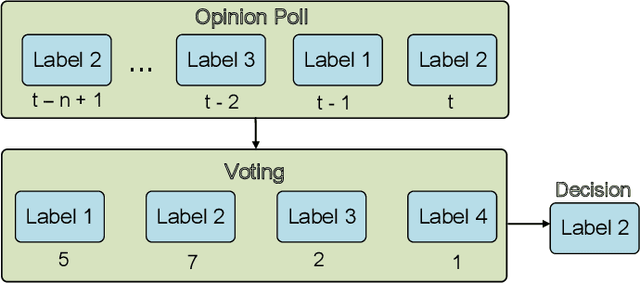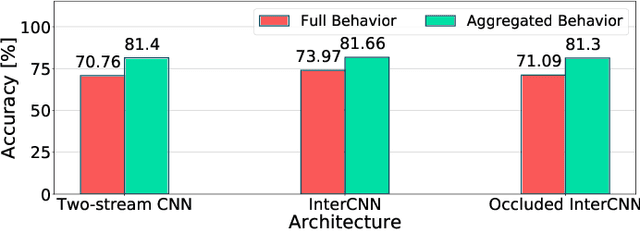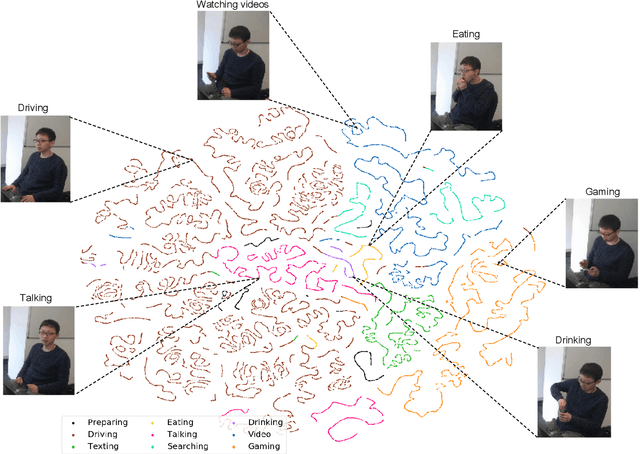Woojin Kim
Counterfactual Fairness Evaluation of Machine Learning Models on Educational Datasets
Apr 15, 2025Abstract:As machine learning models are increasingly used in educational settings, from detecting at-risk students to predicting student performance, algorithmic bias and its potential impacts on students raise critical concerns about algorithmic fairness. Although group fairness is widely explored in education, works on individual fairness in a causal context are understudied, especially on counterfactual fairness. This paper explores the notion of counterfactual fairness for educational data by conducting counterfactual fairness analysis of machine learning models on benchmark educational datasets. We demonstrate that counterfactual fairness provides meaningful insight into the causality of sensitive attributes and causal-based individual fairness in education.
CKConv: Learning Feature Voxelization for Point Cloud Analysis
Jul 27, 2021



Abstract:Despite the remarkable success of deep learning, optimal convolution operation on point cloud remains indefinite due to its irregular data structure. In this paper, we present Cubic Kernel Convolution (CKConv) that learns to voxelize the features of local points by exploiting both continuous and discrete convolutions. Our continuous convolution uniquely employs a 3D cubic form of kernel weight representation that splits a feature into voxels in embedding space. By consecutively applying discrete 3D convolutions on the voxelized features in a spatial manner, preceding continuous convolution is forced to learn spatial feature mapping, i.e., feature voxelization. In this way, geometric information can be detailed by encoding with subdivided features, and our 3D convolutions on these fixed structured data do not suffer from discretization artifacts thanks to voxelization in embedding space. Furthermore, we propose a spatial attention module, Local Set Attention (LSA), to provide comprehensive structure awareness within the local point set and hence produce representative features. By learning feature voxelization with LSA, CKConv can extract enriched features for effective point cloud analysis. We show that CKConv has great applicability to point cloud processing tasks including object classification, object part segmentation, and scene semantic segmentation with state-of-the-art results.
Robust Lane Detection via Expanded Self Attention
Feb 14, 2021



Abstract:The image-based lane detection algorithm is one of the key technologies in autonomous vehicles. Modern deep learning methods achieve high performance in lane detection, but it is still difficult to accurately detect lanes in challenging situations such as congested roads and extreme lighting conditions. To be robust on these challenging situations, it is important to extract global contextual information even from limited visual cues. In this paper, we propose a simple but powerful self-attention mechanism optimized for lane detection called the Expanded Self Attention (ESA) module. Inspired by the simple geometric structure of lanes, the proposed method predicts the confidence of a lane along the vertical and horizontal directions in an image. The prediction of the confidence enables estimating occluded locations by extracting global contextual information. ESA module can be easily implemented and applied to any encoder-decoder-based model without increasing the inference time. The performance of our method is evaluated on three popular lane detection benchmarks (TuSimple, CULane and BDD100K). We achieve state-of-the-art performance in CULane and BDD100K and distinct improvement on TuSimple dataset. The experimental results show that our approach is robust to occlusion and extreme lighting conditions.
False Positive Removal for 3D Vehicle Detection with Penetrated Point Classifier
May 28, 2020



Abstract:Recently, researchers have been leveraging LiDAR point cloud for higher accuracy in 3D vehicle detection. Most state-of-the-art methods are deep learning based, but are easily affected by the number of points generated on the object. This vulnerability leads to numerous false positive boxes at high recall positions, where objects are occasionally predicted with few points. To address the issue, we introduce Penetrated Point Classifier (PPC) based on the underlying property of LiDAR that points cannot be generated behind vehicles. It determines whether a point exists behind the vehicle of the predicted box, and if does, the box is distinguished as false positive. Our straightforward yet unprecedented approach is evaluated on KITTI dataset and achieved performance improvement of PointRCNN, one of the state-of-the-art methods. The experiment results show that precision at the highest recall position is dramatically increased by 15.46 percentage points and 14.63 percentage points on the moderate and hard difficulty of car class, respectively.
Driver Behavior Recognition via Interwoven Deep Convolutional Neural Nets with Multi-stream Inputs
Nov 22, 2018



Abstract:Recognizing driver behaviors is becoming vital for in-vehicle systems that seek to reduce the incidence of car accidents rooted in cognitive distraction. In this paper, we harness the exceptional feature extraction abilities of deep learning and propose a dedicated Interwoven Deep Convolutional Neural Network (InterCNN) architecture to tackle the accurate classification of driver behaviors in real-time. The proposed solution exploits information from multi-stream inputs, i.e., in-vehicle cameras with different fields of view and optical flows computed based on recorded images, and merges through multiple fusion layers abstract features that it extracts. This builds a tight ensembling system, which significantly improves the robustness of the model. We further introduce a temporal voting scheme based on historical inference instances, in order to enhance accuracy. Experiments conducted with a real world dataset that we collect in a mock-up car environment demonstrate that the proposed InterCNN with MobileNet convolutional blocks can classify 9 different behaviors with 73.97% accuracy, and 5 aggregated behaviors with 81.66% accuracy. Our architecture is highly computationally efficient, as it performs inferences within 15ms, which satisfies the real-time constraints of intelligent cars. In addition, our InterCNN is robust to lossy input, as the classification remains accurate when two input streams are occluded.
 Add to Chrome
Add to Chrome Add to Firefox
Add to Firefox Add to Edge
Add to Edge